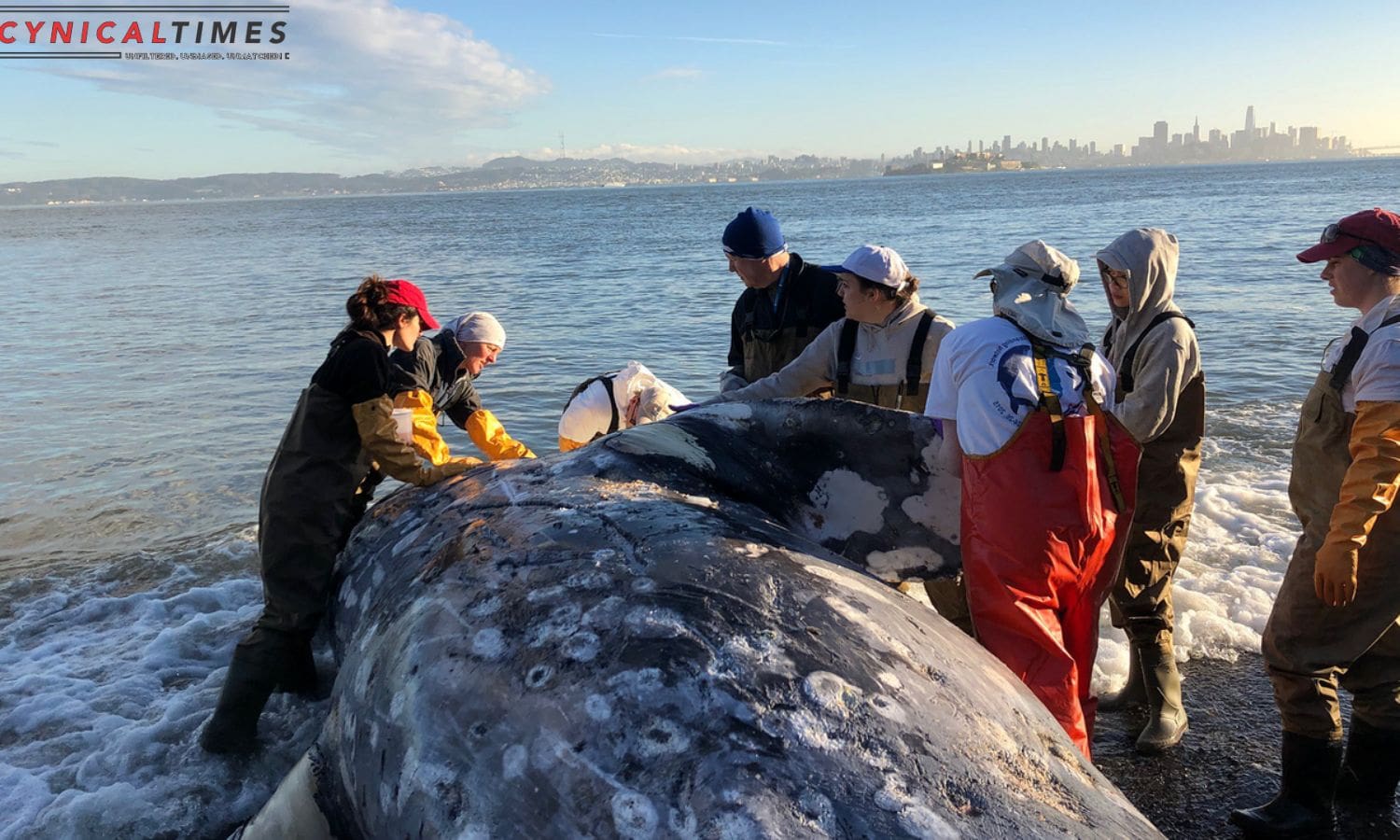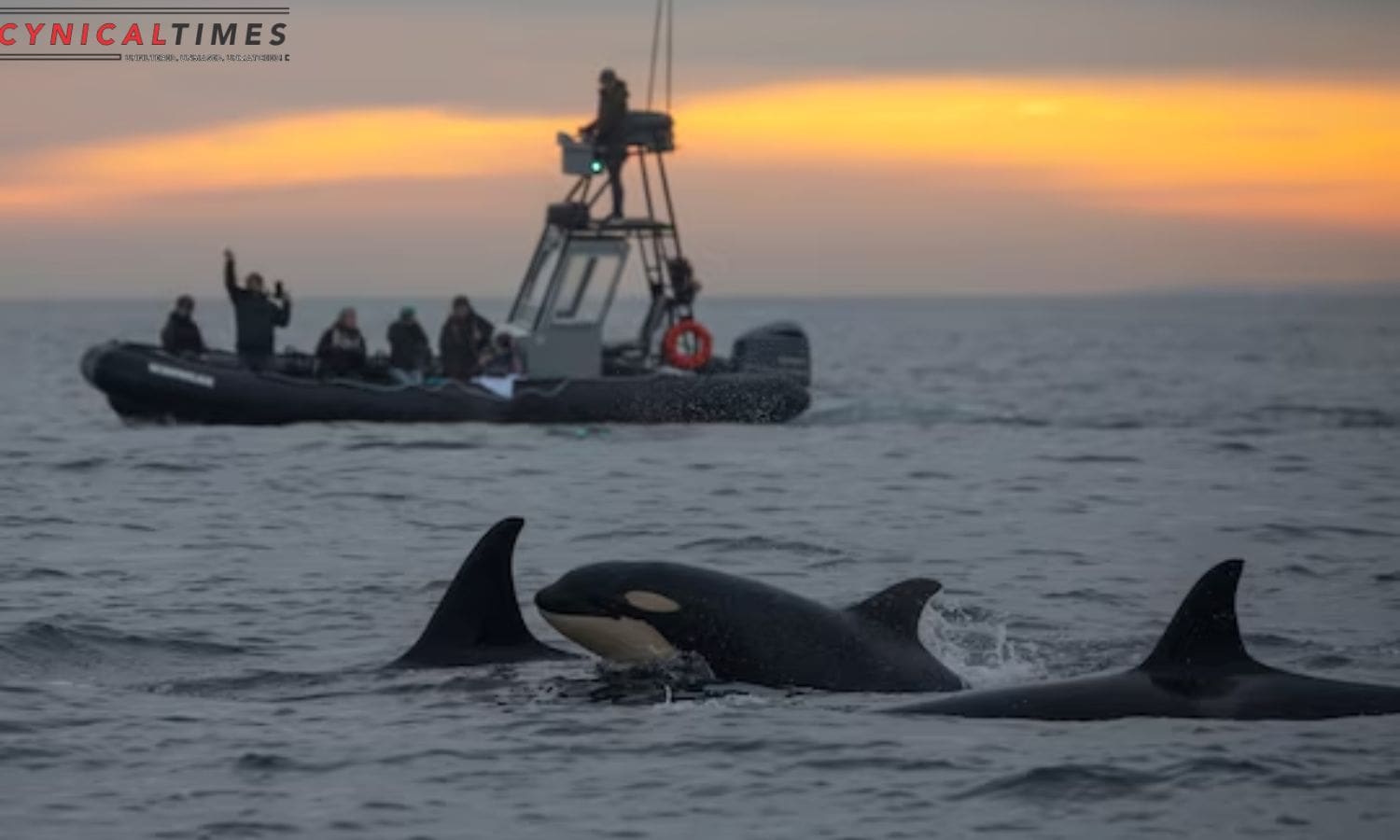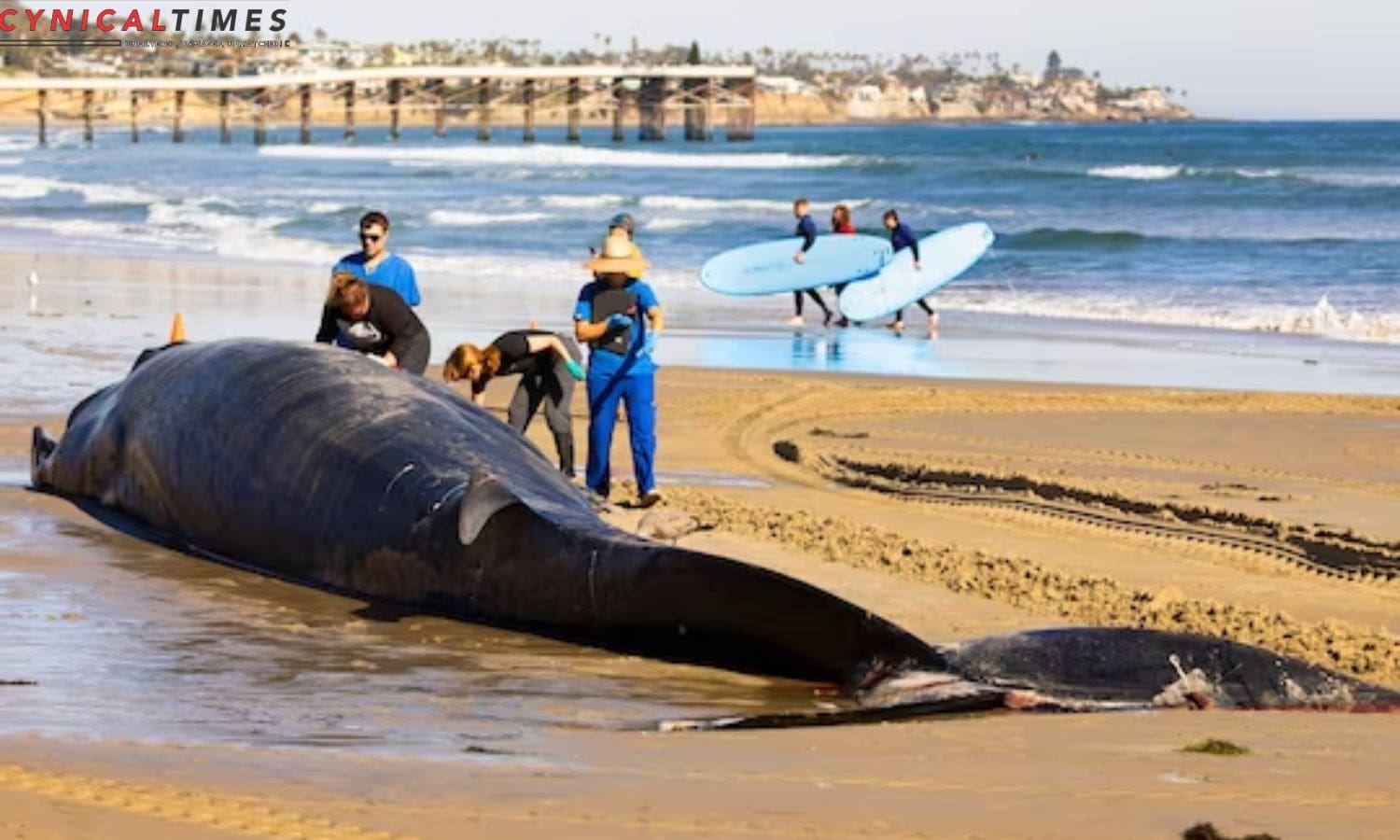Whale Beach Mystery Solved: In a fascinating turn of events, the long-standing mystery surrounding the whale beach phenomenon has finally been unraveled. Recent scientific investigations have implicated orcas, commonly known as killer whales, in this intriguing scientific whodunit.
The enigmatic stranding of a fin whale on Mission Beach and presents compelling evidence linking it to the strategic ambush tactics employed by an orca pod.
Furthermore, it explores the significance of orcas’ return to Southern California waters and the need for responsible coexistence between these majestic creatures and human activities.
Key Takeaways Of Whale Beach Mystery Solved
- A fin whale stranded on Mission Beach in San Diego, prompting researchers to investigate the reasons behind the beaching.
- The National Marine Fisheries Service suspects that an orca pod was involved in the stranding, highlighting the ecological recovery of Southern California waters.
- Orcas play a crucial role as top predators and keystone species, controlling prey populations and reflecting the overall health of the marine ecosystem.
- Balancing the presence of orcas with human activities is a challenge, requiring education, regulation, and collaboration to protect the well-being of both species.


Mysterious Stranding: Fin Whale Puzzles Researchers on Mission Beach
The puzzling stranding of a seemingly healthy 52-foot fin whale on Mission Beach in San Diego has left researchers perplexed and searching for answers.
This mysterious incident has captured the attention of marine biologists and scientists who are eager to understand why such a majestic creature would unexpectedly beach itself.
The fin whale, known for its sleek physique and impressive size, is not typically prone to stranding. Its occurrence has sparked speculation and raised questions about the potential causes behind this phenomenon.
Researchers are currently examining various factors, including environmental conditions, possible injuries or illnesses, and human activities that may have contributed to the whale’s stranding.
The urgency to find answers stems from the desire to prevent similar incidents in the future and to ensure the well-being of these magnificent creatures.
Killer Whale Connection: Orca Pod Suspected in Unusual Stranding
Scientists suspect an orca pod’s involvement in the unusual stranding of the fin whale. The National Marine Fisheries Service’s investigations have pointed to a likely cause for the stranded whale: a pod of killer whales. These orcas, known for their intelligence and cooperative hunting techniques, have been observed in Southern California waters. Marine biologists interpret their presence as a positive sign, indicating the recovery of the local ecosystem. These apex predators play a crucial role in maintaining the balance of marine life by controlling the population of their prey, such as seals and sea lions. To provide a visual representation of their significance, refer to the following table:
| Role of Orcas in the Ecosystem | Benefits |
|---|---|
| Top predator | Controls population of prey species |
| Keystone species | Influences the structure and stability of the ecosystem |
| Maintains biodiversity | Prevents overgrazing of vegetation by prey species |
| Indicator species | Reflects the health of the overall marine ecosystem |
The suspected involvement of the orca pod in the fin whale stranding further highlights their complex and essential role in the marine environment.


Also Read: California Bold Move to Expand Healthcare for Immigrants
Ambush Tactics: Orcas’ Role in the Fin Whale Stranding Unveiled
Several ambush tactics used by orcas have been unveiled, shedding light on their role in the recent fin whale stranding. The strange bite marks found on the stranded fin whale suggest a coordinated attack by a pod of killer whales.
Orcas are known to be highly intelligent and efficient hunters, employing a variety of tactics to capture their prey. In this case, it is likely that the orcas used a combination of techniques to overwhelm and exhaust the larger whale. One possible strategy is the use of ‘wave washing,’ where the orcas create waves to destabilize the fin whale and prevent it from escaping.
They may also have employed a tactic known as ‘carousel feeding,’ where the orcas swim around the prey in a circular motion, taking turns to take bites and wear down the fin whale. By employing these ambush tactics, the orcas were able to successfully subdue the fin whale, leading to its tragic stranding on the beach.
Ecosystem Recovery: Orcas’ Return to Southern California Waters
Orcas’ resurgence in Southern California waters indicates a remarkable recovery of the ecosystem. Marine ecologist Robert Pitman attributes this return to several environmental factors:
- Decreased water pollution: Efforts to reduce pollution in the region have resulted in cleaner and healthier waters, creating a more suitable habitat for orcas and their prey.
- Protection under the Marine Mammal Protection Act: The implementation of this act has safeguarded orcas from hunting and harassment, allowing their population to rebound.
- Changing temperatures affecting species distribution: As ocean temperatures rise, certain prey species are migrating to new areas, bringing orcas back to Southern California in search of food.
The return of orcas to these waters is not only a testament to the resilience of these magnificent creatures, but also a positive indication of the overall health and recovery of the marine ecosystem in Southern California.
Responsible Coexistence: Balancing Orcas’ Presence with Human Activities
The challenge lies in harmonizing the presence of orcas with human activities, fostering responsible coexistence in the marine environment. As the orcas return to Southern California waters, it is crucial to establish guidelines that allow for safe interactions between these magnificent creatures and humans. Researchers have labeled the orcas’ behavior as “boat curious,” indicating their curiosity towards vessels. To ensure the well-being of both parties, caution must be exercised when observing orcas, allowing them to approach on their terms. To provide a comprehensive understanding of responsible coexistence, the table below outlines three key principles:
| Principle | Description | Importance |
|---|---|---|
| Education | Raising awareness about orcas’ behavior, habitat, and conservation efforts | Promotes understanding and respect |
| Regulation | Implementing guidelines for human activities to minimize disturbance | Ensures the safety of both parties |
| Collaboration | Engaging in partnerships between researchers, authorities, and the public | Facilitates data collection and conservation efforts |

Conclusion Of Whale Beach Mystery Solved
In conclusion, the mystery of the stranded fin whale on Mission Beach has been solved, with orcas being implicated in the unusual event. Researchers suspect that an orca pod used ambush tactics to separate the fin whale from its group and strand it.
This discovery highlights the return of orcas to Southern California waters and raises questions about how to balance their presence with human activities. Understanding and promoting responsible coexistence between orcas and humans is essential for ecosystem recovery in this region.
Our Reader’s Queries
What happened to Lulu the killer whale?
Lulu’s untimely demise was a result of entanglement in fishing ropes, as revealed by the Scottish Marine Animal Stranding Scheme’s post mortem examination. It’s a tragic reminder of the devastating impact of human activities on marine life.
Why are the whales beaching themselves?
When a lone animal washes up on the beach, it’s often due to illness or injury. However, factors like harsh weather, advanced age, navigational mistakes, and hunting too close to shore can also play a role. Certain species of whales and dolphins are more susceptible to mass beachings, with toothed whales being the most frequently impacted.
Was there a killer whale on the beach in Florida?
A killer whale has been found washed ashore on a Florida beach, leaving many puzzled as to how it got there. The discovery drew hundreds of people to the beach and even researchers and biologists are stumped by the mystery. The person who found the whale called the Florida Fish and Wildlife Conservation Commission for assistance. The reason for the whale’s presence on the beach remains a monumental mystery.
What do they do with dead whales on the beach?
There are several ways to dispose of a whale’s body, such as taking it to a landfill, burying it on the beach, or partially incinerating it. Dr. Brownlow also mentioned that they can be taken to their laboratories for post-mortem examination.

